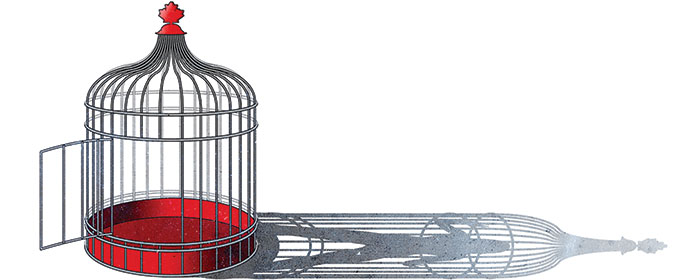
In March 2010, Marian Botsford Fraser wrote an article for The Walrus about an aboriginal woman named Renée Acoby whose troubles began when, shortly after her birth, her father murdered her mother. Raised by her grandmother, who struggled with addiction, Acoby grew into a defiant, angry teenager and soon ran afoul of the law. When she was twenty-one, she was sentenced to three and a half years in a Saskatchewan penitentiary on charges that included drug trafficking and assault with a weapon. In prison, she accumulated an additional eighteen years for an attempted escape and several hostage takings, bringing her sentence to twenty-one and a half years, of which she still has ten to serve. For the past seven, she has lived almost entirely in solitary confinement, having been designated a high risk by the Correctional Service of Canada, in accordance with a controversial penal measure called the Management Protocol, which CSC quietly abandoned in May.
The protocol permitted CSC to place troublesome female prisoners in segregation indefinitely. Offenders could work their way out in three stages—from segregation to partial reintegration to integration—but since the protocol’s inception in 2003, only two of seven women have succeeded. The rules virtually guaranteed failure; there was zero tolerance for aggressive behaviour, whether physical or emotional (Acoby was once ordered not to use profanity for thirty days). And because CSC considered the protocol an administrative rather than a punitive instrument, it could be employed without limitation, whereas purely disciplinary segregation cannot be imposed for more than forty-five days. Nor was use of the protocol subject to judicial oversight.
In the summer of 2007, Acoby’s cell at the Nova Institution for Women in Truro, Nova Scotia, adjoined that of a teenager named Ashley Smith, who was also in segregation and also faring badly. Smith had been sent to a New Brunswick juvenile facility when she was fifteen for throwing apples at a postal worker, and over the next four years she would be the subject of more than 800 incident reports and 500 institutional charges. She was eighteen by the time she entered the federal system, where she was moved seventeen times in less than a year, always segregated and traumatized. She tried repeatedly to commit suicide, and eventually succeeded, strangling herself in her cell at the Grand Valley Institution for Women in Kitchener, Ontario, while CSC employees watched on closed-circuit television. (After prison documents were made public, Smith’s family reached an out-of-court settlement in their $11-million lawsuit against CSC, although a coroner’s inquest into her death is still under way in Ontario.)
It is no secret that prolonged solitary confinement results in harmful psychological consequences, including psychosis, hallucinations, insomnia, and confusion. The Management Protocol was thus a cruel throwback to a time when prison administrators could incarcerate unfortunates like Ashley Smith and throw away the keys. And how better to describe what has happened to Renée Acoby? The Management Protocol may be a thing of the past, but in March an Ontario judge granted an application from the provincial attorney general to have her classified as a dangerous offender, which will make her sentence indefinite. (In Canada, only two women have been so designated. The first committed suicide in prison; the second had her sentence overturned and never reoffended.) The ruling was based on the testimony of a Crown psychiatrist, who never interviewed Acoby but said her history suggested an anti-social personality disorder. From this and other evidence, the judge concluded that she was likely to reoffend.
No one would deny that Renée Acoby has mental health issues, but clearly her eleven years in prison have only made them worse. Is that what we intended? Was it a coincidence that all four of the women in segregation under the terms of the Management Protocol when it was still in force were aboriginal (as, indeed, are more than a third of the 500 women in Canadian prisons)? Was the use of this arbitrary, extra-judicial, and obviously punitive form of confinement—in other precincts, it would have been called torture—in accord with our belief that prisons should be places where criminals can be rehabilitated? When Renée Acoby was declared a dangerous offender, she was in the Edmonton Institution for Women. By the time you read this, she may have been transferred somewhere else. Wherever she is, she faces what may be a life sentence for protesting mistreatment by CSC in the only way she thought she could. The pain is hers, but the shame is ours.
This appeared in the July/August 2011 issue.




